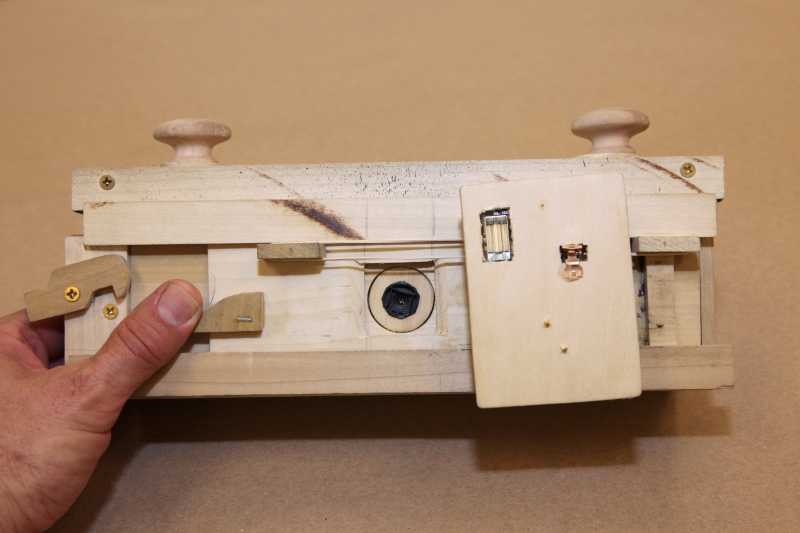2019 Pinhole/Experimental Camera Workshop at the Sawtooth Center for the Visual Arts
In October I’ll be at the Sawtooth Center for Visual Arts in Winston-Salem, NC for a two-day experimental camera workshop. If you live in the area and have interest in taking the workshop, they’ll have more details online. By the way, we’ll be making and using the camera shown above, which you get to take with you at the conclusion of the workshop.
By the way, always feel free to contact me directly at: lkruege@bgsu.edu for more information.
Alternative Camera Workshops
No matter where I teach it, or how long its duration, or the photo backgrounds of the workshop students, the experimental camera workshop is ––– by far ––– my favorite teaching experience; it has an energy and collegiality unlike any other, and still, after all these years, the quality of student photographs produced during the workshop continue amaze and surprise me.
My workshops range anywhere from one day to a semester in length and are a perfect way to integrate both analog and digital photographic processes. Typically, we’ll build a 4×5 camera in a one-day, two-day or one-week workshop. Two-week sessions will include building both a 4×5 and a camera obscura. More than two weeks, all film camera formats options are open.
I’ve offered camera-building workshops or courses at such venues as the Penland School of Crafts, Alfred University, University of Michigan, Syracuse University, Indiana University, Kalamazoo Institute for the Arts, Western Michigan, and Bowling Green State University.

With a combination glass lens and extra large pinhole aperture (brass shim) this camera can record images with a single flash exposure. 2014

During August 2015 I was invited to provide a one-week camera workshop for all the incoming art students at Alfred University — a hands-on introduction to the studio and orientation of sorts for the freshmen. In five days we made 50 cameras for 100 students, took the students through basic darkroom and digital processes, made 500 prints and had an exhibition of the work on the final day. This image includes some of the 1200 camera parts I made in advance of the workshop.
My Cameras, My prints
For more than three decades my primary art practice consisted of building experimental cameras, recording images (primarily 4×5 color negatives) with them and making C-prints. During the last few years my image-making has shifted its focus from analog to digital. Nevertheless, my interest in camera-building continues full force as I work to discover new camera designs and options for them.
Throughout the whole of my career I’ve been both image-maker and object maker. I derive as much satisfaction from building a diorama, a camera or a set for a photograph as I do making the photograph. Many times I find the camera or diorama as every bit as compelling as the print itself.
For this image I made two composite models, attached one to the lens board and photographed the other mouth through it. The six minute exposure was made with sparklers and a pen light.
BGSU Camera Workshop 2012

Student Work
The workshops encourage invention and reward trial and error. Some students fall in love with making cameras and some students get seduced by images the cameras can make. Most students find both possibilities compelling. The shorter the workshop the more balanced the experience. I’ve included a few images to give some idea of what students have done in the past and the nature of their experimentation as image-makers. The color prints are C-type and the BW are fiber base, the majority are in the 11×14 to 20×24 range.






















































